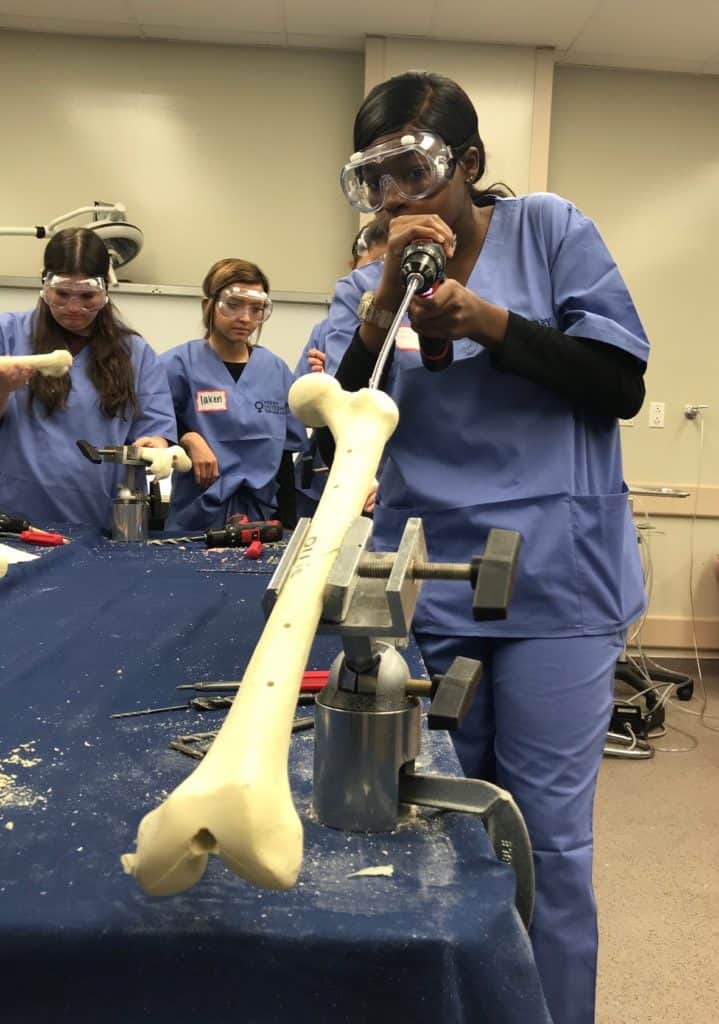Thirty-five high school girls from across Arkansas spent a recent Saturday at UAMS wielding power tools. They drilled, sawed and hammered simulated bones (sawbones) in sessions that included casting, suturing, and repairing broken bones, torn knee ligaments and rotator cuffs.
As part of the Perry Outreach Program, the students, selected from about 100 applicants based on their essays, were able to experience first-hand what it is like to be an orthopaedic surgeon.
UAMS’ Theresa Wyrick, M.D., led the program, which included a presentation illustrating how she has balanced a demanding career and a family with two young children. Her presentation included real-life examples of how surgery can help children regain use of injured hands and to make severely deformed hands usable.
The Perry Outreach Program is organized by the Perry Initiative, a national nonprofit that aims to increase the number of women in orthopaedics and engineering. Its programs are available for students in high school, college and medical school. This was UAMS’ ninth year to partner with the Perry Initiative, which in some years also includes medical students.
Following Wyrick’s presentation, the 10th – 12th grade students lined up to speak with her one-on-one. Now in her 10th year as a program volunteer, Wyrick said giving up a Saturday to mentor students is an easy call.
“When I was starting out, women reached out to me and gave me their time and effort and energy and advice to help me know the things I needed to know and to get to where I am,” said Wyrick, vice chair of the orthopaedic surgery and an associate professor in the College of Medicine Department of Orthopaedic Surgery.
Wyrick was assisted at the workshop by other women orthopaedic surgeons including Ruth Thomas, M.D., who led the Perry Outreach Program at UAMS for many years, and Laurie Hughes, M.D., retired.
Orthopaedic surgery resident Meg Cornaghie, M.D., had just worked an all-night shift, but she wouldn’t miss helping with the event. She recalled attending a similar Perry Initiative workshop during her first year of medical school.

“It really inspired me,” Cornaghie said. “Getting to see the community of women orthopaedic surgeons with families who shared their experiences is something that, as girls, we don’t get a lot of exposure to.”
Only 8% of orthopaedic surgeons are women, Wyrick noted.
“With the idea of paying it forward, hopefully we’re all creating a community of mentors for young women,” she said. “Even if the girls choose other careers, we want to get them exposed to what it is they might want to do and to encourage them to find what it is they’re passionate about, and do it,” she said.

